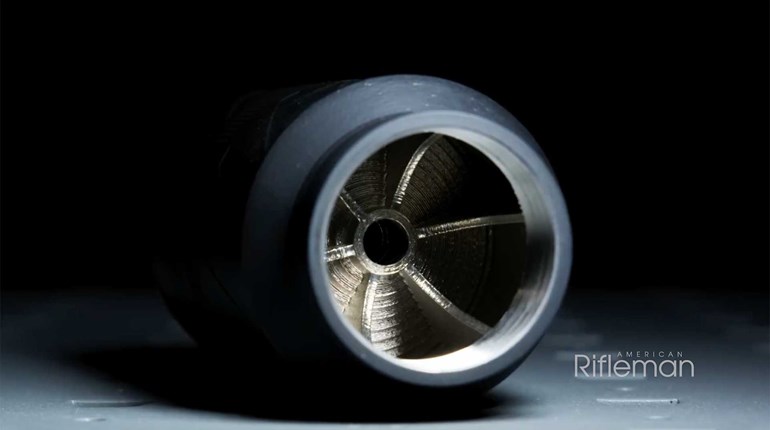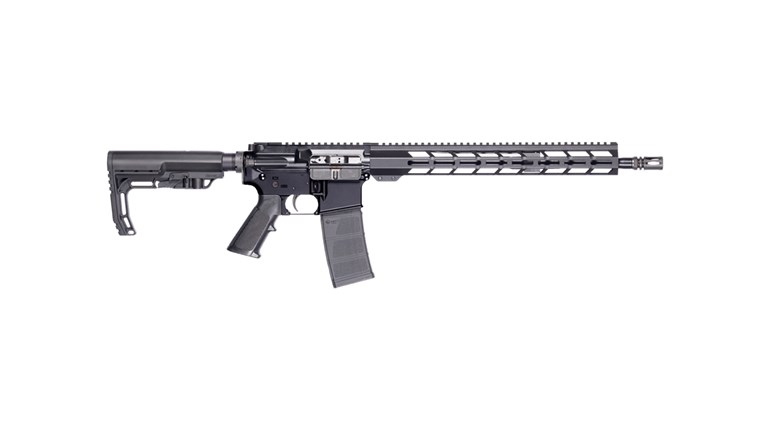
Chances are pretty good that unless you own an ammunition company or have really deep pockets, your range time has tapered off over the past year. People with rifles chambered in the few available ammo types may still be training, but what do you do when your rifle is not compatible with any of those calibers? One option is to change your gun’s chambering, if possible. Modular rifle designs that allow temporary caliber conversions are an excellent alternative to not shooting at all, so long as all components play well together.
Many old and new rifle designs allow caliber changes, and when the retrofit components come from the firearm’s manufacturer, it is usually a straightforward process. Aftermarket parts are where things can get tricky, and AR rifles and carbines lead the pack in this arena.
Although quickly swapping AR upper receivers is the simplest way to change calibers, the availability of so many aftermarket and non-standardized components can present compatibility issues. These problems show up in both small- and large-receiver sizes, and are most often encountered when using uppers and lowers from different makers.
Petite Packages
The majority of ARs in circulation are built on the small-frame, AR-15-size pattern. Fortunately, the presence of an actual “mil-spec” has kept small receiver manufacturers singing the same tune, even if they are not exactly on the same sheet of music. For example, older Colt AR-15s use a front pivot pin that is approximately .065-inch larger in diameter than most other upper receiver brands’ pivot-pin bores. Several companies sell two-piece, threaded adapter pins that allow those large-pin Colt lowers to work with now-standard uppers. I have used these adapters many times when pairing new uppers with older Colt lowers and they work great.
Some amount of play between upper and lower receivers is common, but it can get excessive when they come from different makers. While this “slop” has no effect on a rifle’s mechanical accuracy, it can make holding a consistent body position more difficult due to the upper shifting during recoil. I have only seen two cases where receiver slop caused functional problems. If your lower has a tensioning screw directly under the rear takedown pin, eliminating this play is easy. If no screw is present, a gunsmith can retrofit the lower receiver with a tensioner or you can drop in a rubber “Accu-Wedge” to tighten things up.
Although forged lower receivers tend to be fairly uniform, one potential for variation is in the front pivot-pin housing’s external geometry. Manufacturers use different wall thickness in this area, causing some freefloat fore-end designs to bind when an upper is “shotgunned” for cleaning (removing the rear pin and separating the upper and lower receivers, but leaving them joined at the front pin). A few minutes with a needle or rat-tail file on the fore-end’s impact points will relieve the contact. Take it slow, removing a little at a time and testing the fit frequently.
The final issue I encounter when adding uppers to small-frame-AR lowers is that some trigger groups do not work well with pistol-caliber carbine (PCC) uppers. Even though most PCC bolt carriers are now made to work with both Colt- and Glock-pattern magazines, their undersides differ from maker to maker. This problem can pop up with either match or mil-spec trigger groups, depending on the brands used. Anytime you add a new upper to your lower, be sure to do a proper function check to ensure that the safety and the trigger group’s primary sear, disconnector and hammer operate correctly. If they do not, a different bolt carrier or trigger group will likely be required.
Big Boys
Large-frame AR receivers have more cross-compatibility issues when adding a new upper to an existing lower. The first task is to make sure your new upper matches your lower’s pattern: ArmaLite AR-10 cut, DPMS LR 308 cut or the less common DPMS Gen II short receiver. Beyond that starting point, there are slight takedown- and pivot-pin-size differences between receiver manufacturers, even though most makers theoretically use the same sizes.
A tiny difference in diameter is more than enough to make seating the pins difficult or even impossible. Some receiver manufacturers list compatible products from other companies on their websites, but if you are unsure, contact both companies to ensure their receivers will work together before purchasing.
If you need an Accu-Wedge to remove large-frame receiver slop, the circular bottom of the wedge will probably need to be thinned. A razor blade works well to cut one thin slice at a time until the fit is just right. In a pinch, a third to half of a foam earplug can be compressed under the upper receiver’s rear takedown pin tab in the same manner. I used a piece of earplug this way in my Army-issued sniper rifle for several years before commercial solutions became
readily available.
Differences in bolt-stop recesses between large-upper-receiver makers can cause problems, too. If you are trying to seat your new upper and find that something is stopping it from fully closing on the lower, check to see if the bolt stop is the issue. Press the bottom of the bolt stop so that the top edge tips out, and then try to fully seat the upper again.
If it seats correctly, the top/inside edge of the bolt stop will need to be filed down until there’s no interference. This part is supposed to be hardened, so filing should be slow. I remove the bolt stop and then use a low-rpm rotary tool with a mildly abrasive polishing drum, taking care not to overheat the part.
When mating uppers and lowers from different large-frame manufacturers, contours are often mismatched where the upper meets the bridge section of the lower receiver, just below the charging handle. Although the difference is usually just cosmetic, I encounter charging handle interference in this area from time to time. The best way to alleviate this problem—and all of the others listed above for both large and small frame sizes—is to use receivers from the same manufacturer.
I do not mean to imply that adding new uppers to AR lowers is always problematic—that is the exception, rather than the rule. These are simply the main issues I have dealt with over the course of adding several hundred uppers to existing lowers. While the days of 25 cents-per-round may be a distant memory, some popular centerfire rifle cartridges can still (as of this writing) be had for significantly less than a dollar apiece. If your rifle has the modularity to switch to one of these calibers, taking advantage of that capability will help to keep your skills sharp.



































